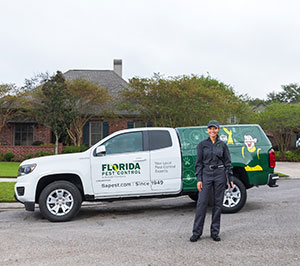Top Quality A1 Pest Control Services Charlotte - Protect Your Home
Top Quality A1 Pest Control Services Charlotte - Protect Your Home
Blog Article
Bed Bug Treatment Malfunction: Contrasting Chemical Vs. Non-Chemical Solutions
In the world of parasite control, particularly when handling the consistent concern of bed insects, the option in between chemical and non-chemical therapy services can be a pivotal one. Both strategies supply distinct advantages and drawbacks, influencing factors such as effectiveness, safety and security considerations, and overall price. By analyzing the nuanced information of each approach, a more clear understanding of which course to go after in resolving a bed pest problem can be attained.
Effectiveness of Chemical Treatments
Chemical therapies for bed insect problems have actually been commonly recognized for their quick and powerful efficiency in removing these bugs. When thinking about the effectiveness of chemical therapies, it is important to understand that they can give a quick and thorough option to a bed insect issue.
Furthermore, chemical treatments have the advantage of offering residual effects, meaning that they can continue to remove bed bugs also after the initial application. This residual activity is especially helpful in combating any type of possible re-infestations. Additionally, the fast activity of chemical treatments can bring alleviation to individuals dealing with extreme bed insect problems, allowing them to restore control of their living rooms rapidly.
Security Interest In Chemical Solutions
One essential facet that needs mindful factor to consider when using chemical services for bed insect treatment is guaranteeing the security of occupants and the environment. Direct exposure to specific chemicals utilized in bed insect treatments can lead to respiratory problems, skin irritation, or various other adverse reactions, particularly in individuals with pre-existing problems or level of sensitivities.
Furthermore, the ecological influence of chemical options is another considerable consideration. Some pesticides utilized in bed insect therapies may be harmful to valuable insects, wild animals, and ecosystems if they seep into the dirt or water supply. It is necessary to use chemical treatments carefully, complying with security standards, and taking into consideration much less hazardous alternatives to alleviate these risks and guarantee the secure and efficient monitoring of bed pest problems.
Benefits of Non-Chemical Methods
Thinking about the possible security problems and environmental influence related to chemical options for bed bug treatment, exploring non-chemical strategies offers a promising alternative with several distinct advantages. Non-chemical approaches use a more secure choice for homes, particularly those with youngsters, individuals, or animals conscious severe chemicals. These approaches eliminate the dangers of direct exposure to poisonous materials, reducing the possibility for adverse wellness impacts. Moreover, non-chemical therapies are environmentally pleasant, as they do not add to air or water pollution, making them a lasting option for insect control.
Furthermore, non-chemical services can be efficient in targeting bed pests, including hard-to-reach locations where chemical treatments might not permeate. Approaches such as heat therapy, vacuuming, steam cleaning, and cushion coverings provide comprehensive obliteration without making use of unsafe chemicals. Furthermore, non-chemical approaches can be much less disruptive, calling for very little preparation and permitting quicker reentry into dealt with areas. On the whole, going with non-chemical bed pest therapy methods not just focuses on safety and ecological protection yet also makes sure thorough and efficient bug control.
Limitations of Non-Chemical Treatments

Furthermore, non-chemical therapies usually call for multiple applications to accomplish successful eradication. This can be time-consuming and may not always assure total removal of all bed bugs and their eggs, especially in concealed or hard-to-reach locations.
Moreover, the success of non-chemical treatments heavily depends on appropriate application find more info and thoroughness, which can be testing for individuals without specialist experience. Poor application of non-chemical approaches may lead to insufficient eradication, resulting in persistent invasions and the demand for additional treatments.
Consequently, while non-chemical treatments have their benefits, it is important to acknowledge these limitations and consider them when figuring out the most efficient strategy for managing bed bug infestations.
Cost Comparison: Chemical Vs. Non-Chemical Options
Offered the limitations connected with non-chemical therapies, a vital facet to assess in the context of bed pest management is the price comparison in between chemical and non-chemical choices. In comparison, non-chemical therapies like warmth therapy or vapor can be much more expensive, with costs ranging from $1,000 to $6,000 for an entire home. While the preliminary price of chemical treatments might seem reduced, multiple therapies might be needed to fully eliminate the infestation, possibly boosting the general expense.
Verdict

Taking into consideration the prospective safety and security issues and environmental effect linked with chemical remedies for bed pest treatment, checking out non-chemical techniques provides an appealing choice with numerous unique advantages.Given the restrictions connected with non-chemical therapies, an important facet to examine in the context of bed pest management is the cost contrast between chemical and non-chemical choices. In comparison, non-chemical treatments like heat treatment or heavy steam can be more pricey, with expenses varying from $1,000 to $6,000 for a whole home. While the first cost of chemical therapies might appear reduced, numerous therapies might be called for to completely get rid of the problem, possibly enhancing the total expense.In conclusion, when contrasting chemical and non-chemical bed insect therapy options, it is vital to think about termite treatment systems effectiveness, security, advantages, restrictions, and price.
Report this page